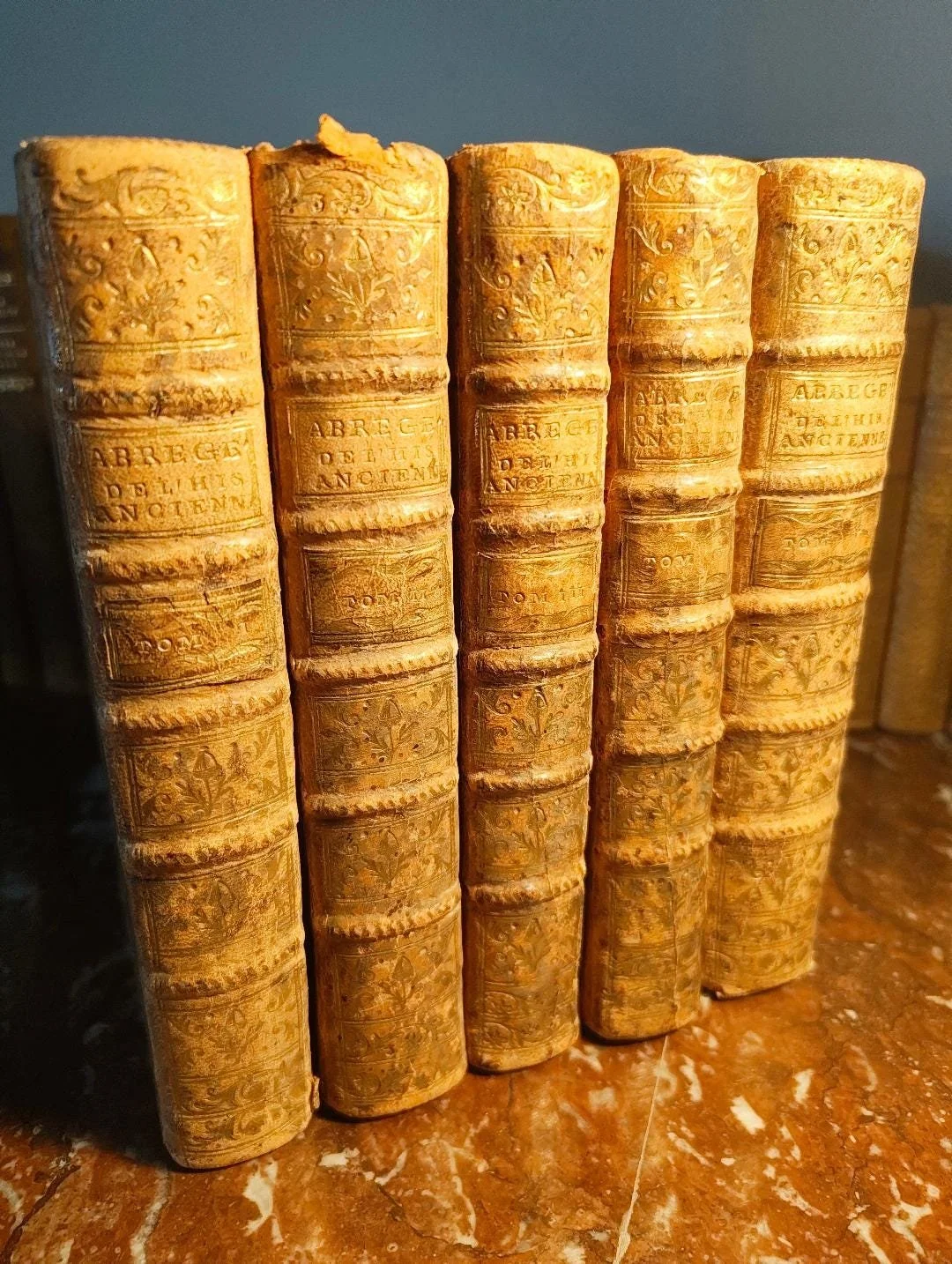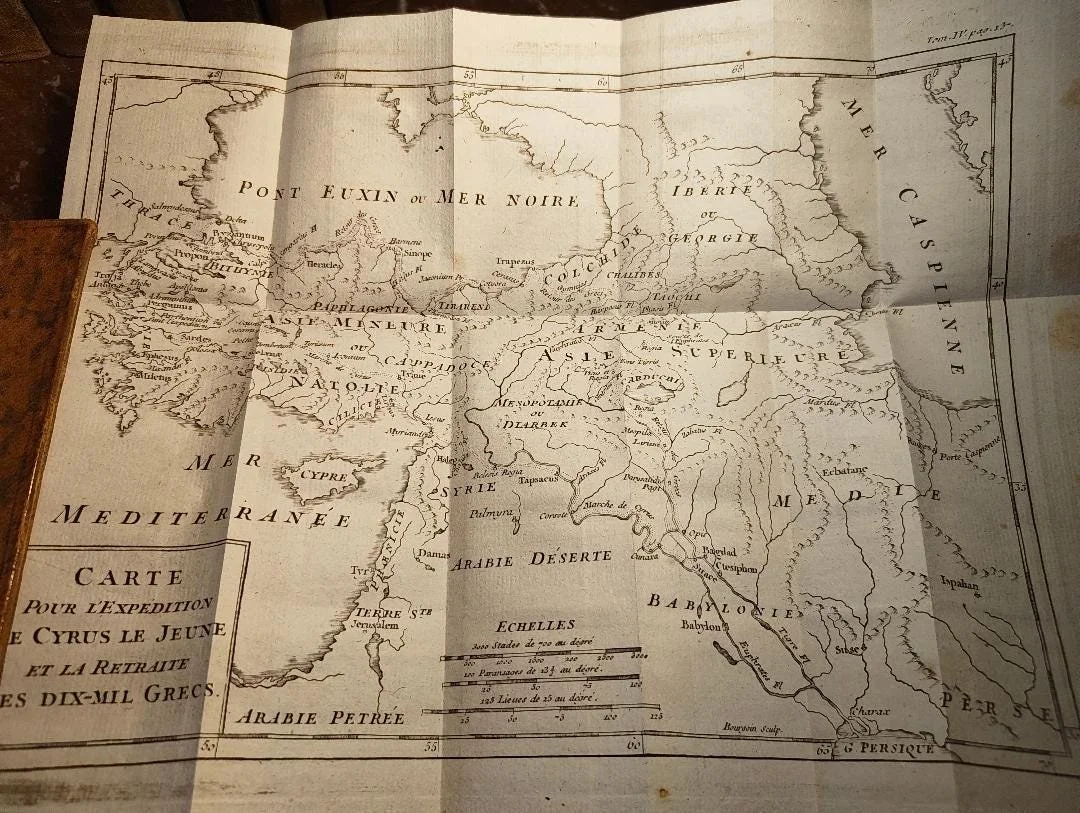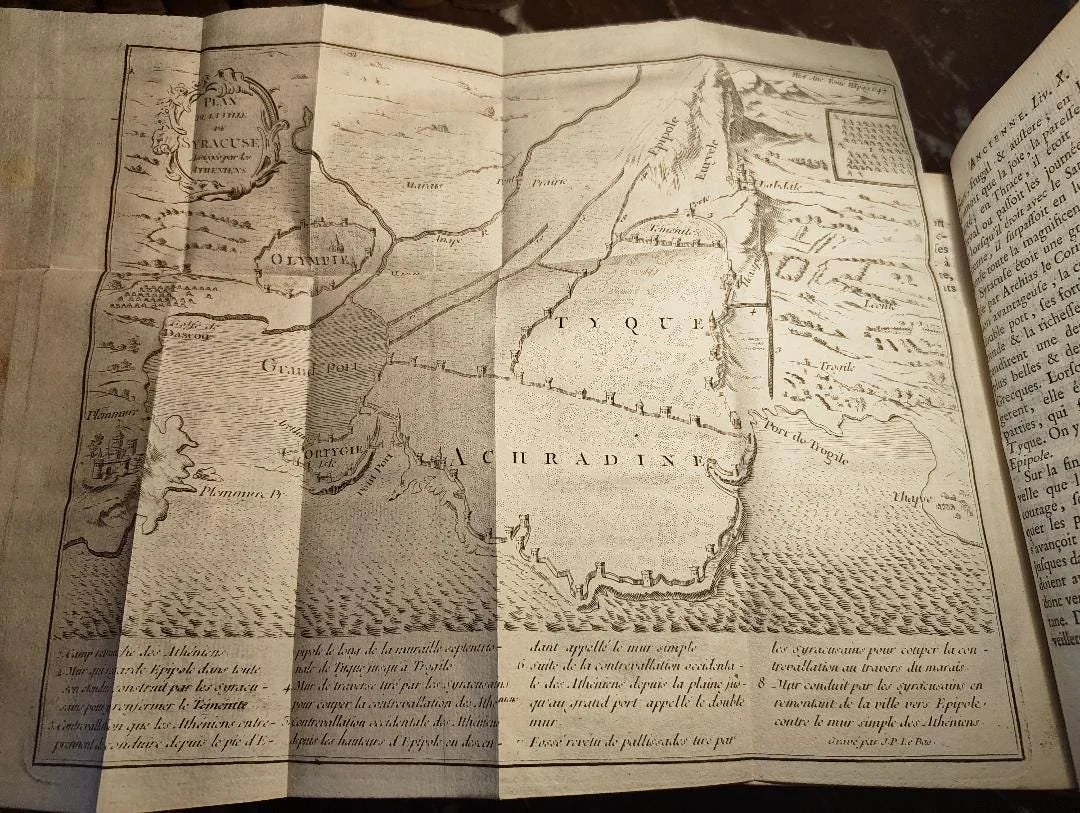 Image 1 of 9
Image 1 of 9

 Image 2 of 9
Image 2 of 9

 Image 3 of 9
Image 3 of 9

 Image 4 of 9
Image 4 of 9

 Image 5 of 9
Image 5 of 9

 Image 6 of 9
Image 6 of 9

 Image 7 of 9
Image 7 of 9

 Image 8 of 9
Image 8 of 9

 Image 9 of 9
Image 9 of 9










Charles Rollin. Abrégé de l’Histoire Ancienne. Paris, 1782. Five Volumes with Fold Out Maps
A complete Enlightenment era survey of the ancient world, preserved in contemporary full leather
This 1782 Paris edition of Charles Rollin’s Abrégé de l’Histoire Ancienne presents a refined five volume set that captures the Enlightenment fascination with Greece, Rome, Persia, and the wider ancient Mediterranean. Revised by abbé Tailhié and published by Barrois l’aîné, Savoye, and P. T. Barrois le jeune, the collection reflects the enduring influence of Rollin whose works shaped classical education throughout eighteenth century Europe.
Rollin’s histories were valued for their clarity, moral purpose, and broad geographical reach. His approach balanced narrative with instruction, presenting antiquity as a treasury of political and ethical examples for modern readers. Editions such as this were often found in the libraries of educated families, academies, and the cultivated bourgeoisie, and they played a formative role in shaping Europe’s understanding of the ancient world during the decades before the French Revolution.
This set is notable for its series of fold out copper engraved maps and plates, including detailed views of the Mediterranean, Syracuse, Persia, and a variety of architectural and military subjects. These illustrations reflect the Enlightenment commitment to visual learning and lend the set both academic and aesthetic value.
All five volumes are bound in contemporary full leather with gilt decorated spines and red sprinkled edges. The bindings display sympathetic age related wear with rubbing along the joints and minor losses on some spines, yet the set remains complete, cohesive, and structurally sound. The interiors are clean with gentle toning and occasional foxing. The fold out maps are intact with only minor tears typical of eighteenth century usage.
A handwritten ownership inscription reading “Schwerin” appears in at least one volume. Although unconfirmed, it may refer to a member of the von Schwerin family, an established noble house active in Sweden and northern Germany during the eighteenth and nineteenth centuries. If so, the set carries a provenance that adds depth to its historical presence.
For collectors of Enlightenment scholarship, French printed history, or antique sets enriched with maps and illustrations, this is an appealing and substantive example. It stands as a testament to the eighteenth century desire to narrate the ancient world with elegance, precision, and pedagogical care.
A complete Enlightenment era survey of the ancient world, preserved in contemporary full leather
This 1782 Paris edition of Charles Rollin’s Abrégé de l’Histoire Ancienne presents a refined five volume set that captures the Enlightenment fascination with Greece, Rome, Persia, and the wider ancient Mediterranean. Revised by abbé Tailhié and published by Barrois l’aîné, Savoye, and P. T. Barrois le jeune, the collection reflects the enduring influence of Rollin whose works shaped classical education throughout eighteenth century Europe.
Rollin’s histories were valued for their clarity, moral purpose, and broad geographical reach. His approach balanced narrative with instruction, presenting antiquity as a treasury of political and ethical examples for modern readers. Editions such as this were often found in the libraries of educated families, academies, and the cultivated bourgeoisie, and they played a formative role in shaping Europe’s understanding of the ancient world during the decades before the French Revolution.
This set is notable for its series of fold out copper engraved maps and plates, including detailed views of the Mediterranean, Syracuse, Persia, and a variety of architectural and military subjects. These illustrations reflect the Enlightenment commitment to visual learning and lend the set both academic and aesthetic value.
All five volumes are bound in contemporary full leather with gilt decorated spines and red sprinkled edges. The bindings display sympathetic age related wear with rubbing along the joints and minor losses on some spines, yet the set remains complete, cohesive, and structurally sound. The interiors are clean with gentle toning and occasional foxing. The fold out maps are intact with only minor tears typical of eighteenth century usage.
A handwritten ownership inscription reading “Schwerin” appears in at least one volume. Although unconfirmed, it may refer to a member of the von Schwerin family, an established noble house active in Sweden and northern Germany during the eighteenth and nineteenth centuries. If so, the set carries a provenance that adds depth to its historical presence.
For collectors of Enlightenment scholarship, French printed history, or antique sets enriched with maps and illustrations, this is an appealing and substantive example. It stands as a testament to the eighteenth century desire to narrate the ancient world with elegance, precision, and pedagogical care.

